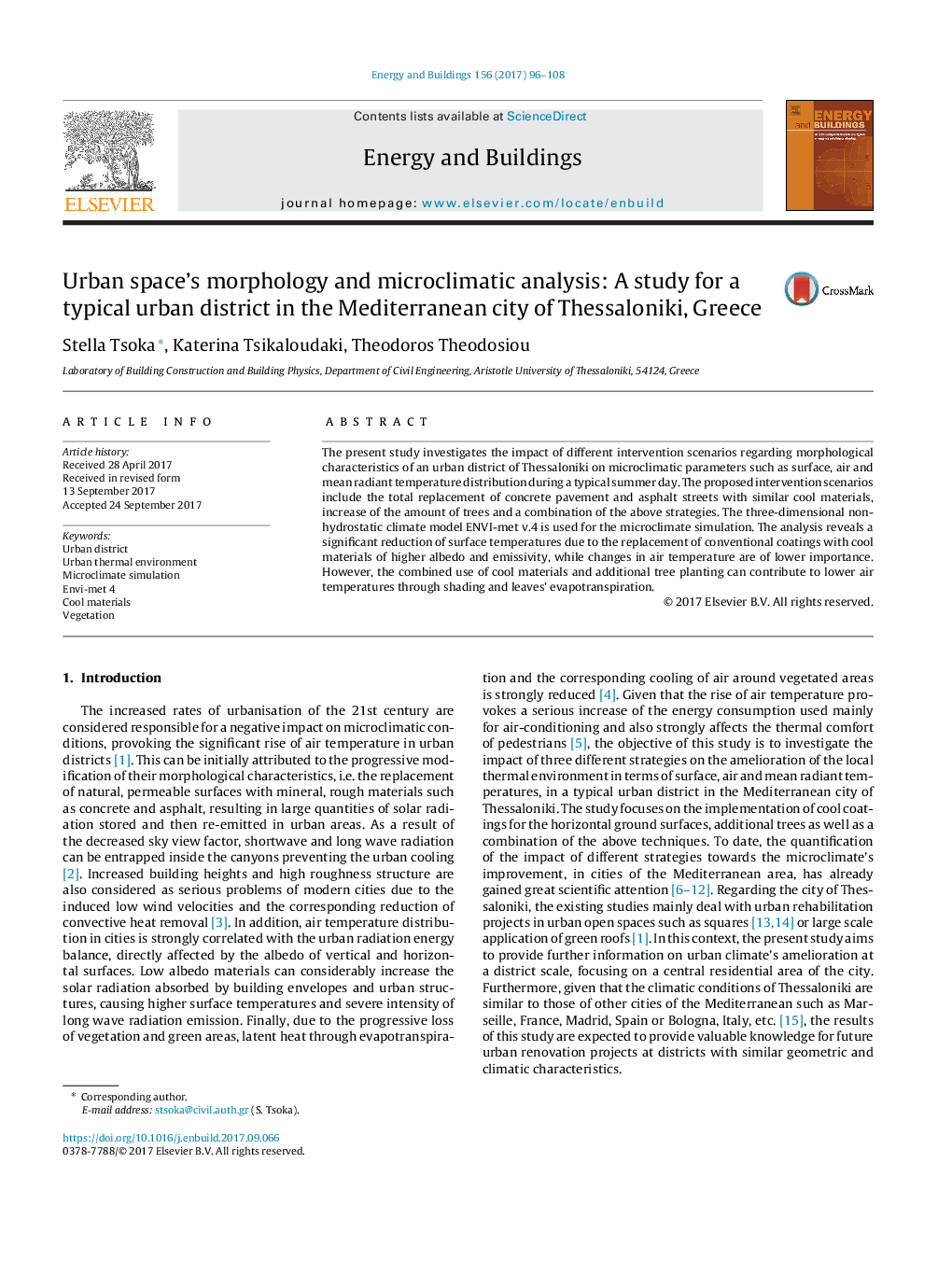| Article ID | Journal | Published Year | Pages | File Type |
|---|---|---|---|---|
| 4918805 | Energy and Buildings | 2017 | 13 Pages |
Abstract
The present study investigates the impact of different intervention scenarios regarding morphological characteristics of an urban district of Thessaloniki on microclimatic parameters such as surface, air and mean radiant temperature distribution during a typical summer day. The proposed intervention scenarios include the total replacement of concrete pavement and asphalt streets with similar cool materials, increase of the amount of trees and a combination of the above strategies. The three-dimensional non-hydrostatic climate model ENVI-met v.4 is used for the microclimate simulation. The analysis reveals a significant reduction of surface temperatures due to the replacement of conventional coatings with cool materials of higher albedo and emissivity, while changes in air temperature are of lower importance. However, the combined use of cool materials and additional tree planting can contribute to lower air temperatures through shading and leaves' evapotranspiration.
Related Topics
Physical Sciences and Engineering
Energy
Renewable Energy, Sustainability and the Environment
Authors
Stella Tsoka, Katerina Tsikaloudaki, Theodoros Theodosiou,
